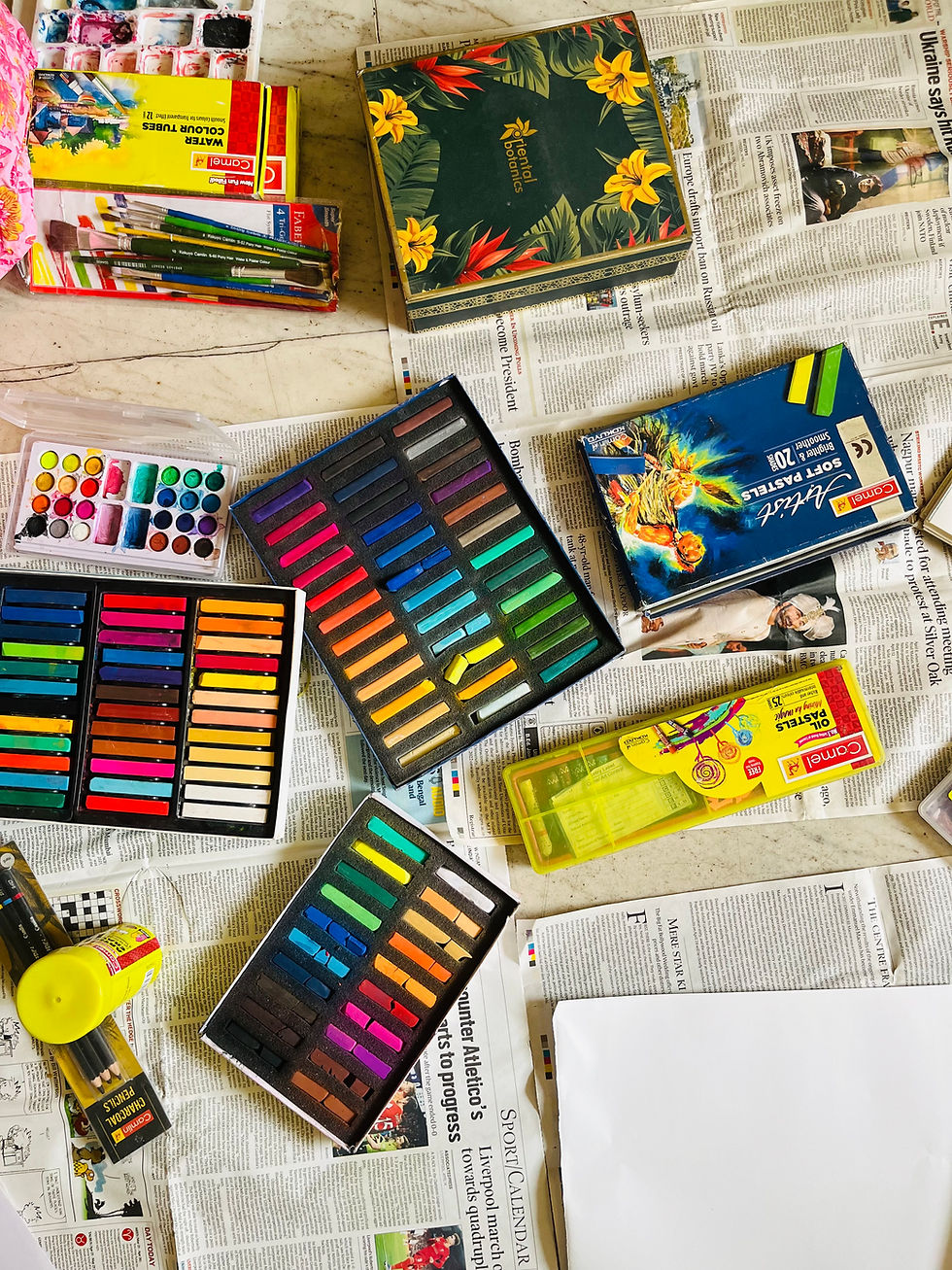What skills do we need to cultivate as mental health practitioners?
- Rhea Abrol
- May 8, 2023
- 3 min read
Updated: Oct 16, 2023
As mental health practitioners, it is vital to go beyond cultural competence toward critical consciousness (Gipson, 2015) to be able to integrate intersectional social, structural, and cultural influences within our practice. I am also increasingly becoming aware of naming and interrogating my ‘masked identity’ (Talwar et al., 2004) to recognize the dynamics of power that exist psychologically.
Introspection, involving an intentional and inclusive evaluation of unconscious influences within the psyche, is essential to deconstruct the impact of our interpsychic concerns on the therapeutic relationship (Rubin, 1979). This also involves actively exploring the shadow and ongoing perceptual awareness of the interconnectivity between trauma, social justice, and “forces of marginalization” (Hocoy, 2005, p.14). Thus, extensive work such as., research, emotional labour, and dialogue investigating my oppressive social location, colonization of my mind, and therapeutic dynamics of power are crucial to facilitating a meaningful social justice framework in therapy.
Another fundamental skill for mental health practitioners is therapeutic presence (Robins, 1998), conceptualized as dynamic attention to the moment of convergence between the therapist’s inner self and the client’s self. Basically,“the to-and-fro oscillations of cognition, feeling and embodiment, as well as between one’s experience and experience shared with another.” (Schwarz, Snir & Regev, 2018, p.4). Personally, this means preserving a mindful embodied presence of myself while sustaining openness and receptivity to the client in the session. For me, therapeutic presence is characterized by a psychological sense of flow and immersion (Csikszentmihalyi, 2014), incorporating movement, flexibility, and authenticity. This is often a consequence of understanding, empathic listening, holding, giving space, and demonstrating sensitivity to clients’ needs.
Given the universality in mental health practitioners feeling anxious, fragile, and disoriented during these uncertain times (Carr, 2020), It is important for me to navigate any feelings of disconnection by actively cultivating a practice of moment-to-moment awareness and engaging in deep reflective work. I aim to maintain a consistent and constant engagement in the arts to uphold a sense of “wholeness, completion, containment and connection” (Brown, 2008, p.207) in the therapeutic space. Additionally, contextual elements like pre-session rituals, understanding the dialectical impact of art materials on therapeutic presence (Geller & Porges, 2014; Nissimov-Nahum, 2013), and attentive focus on self in service of the client aids me in remaining centered and aligned and helps nurture my therapeutic presence in the here and now. I even made a transitional object (Winnicott, 1953), a green clay ball that I could hold while emphasizing repetition, presence, clarity, and awareness, as its color, form, texture, and malleability support where I am what I am doing. It makes me believe that I create the space alongside the client, and my presence is crucial.
In essence, constant reflexivity and intersectionality in my ways of being, along with valuing and integrating indigenous practices, can assist me in creating a framework that is actively rooted in the varied socio-cultural realities of clients.
References
Benjamin, J. (1998). Shadow of the other: Intersubjectivity and gender in psychoanalysis. New York, NY: Routledge.
Brown, C. (2008). The importance of making art for the creative arts therapist: An artistic inquiry. The Arts in Psychotherapy, 35(3), 201–208. doi:10.1016/j.aip.2008.04.002
Csikszentmihalyi, M. (2014). Toward a psychology of optimal experience. Flow and the Foundations of Positive Psychology, 209–226. doi:10.1007/978–94–017–9088–8_14
Geller, S. M., & Porges, S. W. (2014). Therapeutic presence: Neurophysiological mechanisms mediating feeling safe in therapeutic relationships. Journal of Psychotherapy Integration, 24(3), 178–192. doi: 10.1037/a0037511
Gipson, L. R. (2015). Is cultural competence enough? Deepening social justice pedagogy in art therapy. Art Therapy, 32(3), 142–145. doi:10.1080/07421656.2015.1060835
Hocoy, D. (2005). Art therapy and social action: A transpersonal framework. Art Therapy, 22(1), 7–16. doi:10.1080/07421656.2005.10129466
Mitchell, S. A. (2000). Relationality: From attachment to intersubjectivity. Hillside, NJ: Analytic Press.
Nissimov-Nahum, E. (2013). Colors of soul and mind: Art therapy for children who behave aggressively. Tel-Aviv, Israel: Mofet Institute. (in Hebrew)
Rubin, J. A. (1979) Opening Remarks. In L. Gantt (Ed.), Art therapy: Expanding horizons (pp. 1–2). Baltimore: American Art Therapy Association.
Schwarz, N., Snir, S., & Regev, D. (2018). The therapeutic presence of the art therapist. Art Therapy, 35(1), 11–18. doi:10.1080/07421656.2018.1459115
Susan M. D. Carr (2020) Art therapy and COVID-19: supporting ourselves to support others, International Journal of Art Therapy, 25(2), 49–51, DOI: 10.1080/17454832.2020.1768752
Schwarz, N., Snir, S., & Regev, D. (2018). The therapeutic presence of the art therapist. Art Therapy, 35(1), 11–18. doi:10.1080/07421656.2018.1459115
Talwar, S., Iyer, J., & Doby-Copeland, C. (2004). The invisible veil: Changing paradigms in the art therapy profession. Art Therapy, 21(1), 44–48. doi:10.1080/07421656.2004.10129325
Winnicott, D. W. (1953). Transitional objects and transitional phenomena. International Journal of Psycho-Analysis, 34, 89–97.



Comments